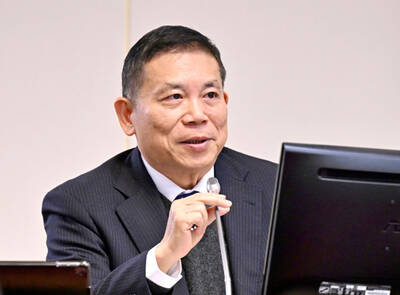The Investment Commission approved Taiwan’s outward investment of US$850 million in Vietnam in the first 11 months of last year, accounting for nearly 40 percent of all outward investment in ASEAN, with 54.1 percent of the investment in the manufacturing sector, the Ministry of Economic Affairs said on Monday.
Taiwan’s investment in the electronic components, computer, electronics and optical product manufacturing industries accounted for 22.1 percent of the total investment in Vietnam, compared with only 3.3 percent in all of 2018, as the US-China trade dispute forced companies in high-tech industries to reorganize their supply chains to avoid hefty US tariffs on products made in China, the ministry said.
Taiwan’s major investments in Vietnam over the past few years have been in the traditional textile, base metal and chemical industries, but Vietnam’s fast-growing domestic market spurred Taiwanese firms to increase investment in the solar power and real-estate sectors by 31.8 percent during the first 11 months of last year, compared with the whole of 2018.
Vietnam has become one of the most popular destinations for Taiwanese investors, as it is one of the countries covered by the New Southbound Policy, which aims to promote exchanges with ASEAN, member countries, as well as Australia, Bangladesh, Bhutan, India, Nepal, Pakistan, Sri Lanka and New Australia, to reduce the country’s economic reliance on China.
As a member of the Comprehensive and Progressive Agreement for Trans-Pacific Partnership and the Regional Comprehensive Economic Partnership, Vietnam has seen an increase in foreign direct investment (FDI) in the past few years.
For the first 11 months of last year, FDI from Taiwan to Vietnam totaled US$1.53 billion, accounting for 4.8 percent of its total FDI, up 1.8 percentage points from all of 2018, Vietnamese Foreign Investment Agency statistics showed.
Taiwan was the fifth-largest foreign investor in Vietnam, the statistics showed.
Vietnam attracted US$31.8 billion in FDI in the first 11 months of last year, up 3 percent year-on-year, the agency said.
Among the 117 countries and territories investing in Vietnam, Hong Kong and China were the largest with US$10.26 billion, making up 32.3 percent of the total during the 11-month period, followed by South Korea with US$5.73 billion (18 percent) and Singapore with US$4.47 billion (14 percent).
Taiwan’s exports to Vietnam during the 11-month period totaled US$9.85 billion, up 0.3 percent year-on-year.
With the signing of a new bilateral investment agreement last month, Taiwan’s investment in the Southeast Asian country is expected to increase more, the ministry said.

Taiwan will prioritize the development of silicon photonics by taking advantage of its strength in the semiconductor industry to build another shield to protect the local economy, National Development Council (NDC) Minister Paul Liu (劉鏡清) said yesterday. Speaking at a meeting of the legislature’s Economics Committee, Liu said Taiwan already has the artificial intelligence (AI) industry as a shield, after the semiconductor industry, to safeguard the country, and is looking at new unique fields to build more economic shields. While Taiwan will further strengthen its existing shields, over the longer term, the country is determined to focus on such potential segments as

UNCERTAINTY: Innolux activated a stringent supply chain management mechanism, as it did during the COVID-19 pandemic, to ensure optimal inventory levels for customers Flat-panel display makers AUO Corp (友達) and Innolux Corp (群創) yesterday said that about 12 to 20 percent of their display business is at risk of potential US tariffs and that they would relocate production or shipment destinations to mitigate the levies’ effects. US tariffs would have a direct impact of US$200 million on AUO’s revenue, company chairman Paul Peng (彭雙浪) told reporters on the sidelines of the Touch Taiwan trade show in Taipei yesterday. That would make up about 12 percent of the company’s overall revenue. To cope with the tariff uncertainty, AUO plans to allocate its production to manufacturing facilities in

COLLABORATION: Given Taiwan’s key position in global supply chains, the US firm is discussing strategies with local partners and clients to deal with global uncertainties Advanced Micro Devices Inc (AMD) yesterday said it is meeting with local ecosystem partners, including Taiwan Semiconductor Manufacturing Co (TSMC, 台積電), to discuss strategies, including long-term manufacturing, to navigate uncertainties such as US tariffs, as Taiwan occupies an important position in global supply chains. AMD chief executive officer Lisa Su (蘇姿丰) told reporters that Taiwan is an important part of the chip designer’s ecosystem and she is discussing with partners and customers in Taiwan to forge strong collaborations on different areas during this critical period. AMD has just become the first artificial-intelligence (AI) server chip customer of TSMC to utilize its advanced

Chizuko Kimura has become the first female sushi chef in the world to win a Michelin star, fulfilling a promise she made to her dying husband to continue his legacy. The 54-year-old Japanese chef regained the Michelin star her late husband, Shunei Kimura, won three years ago for their Sushi Shunei restaurant in Paris. For Shunei Kimura, the star was a dream come true. However, the joy was short-lived. He died from cancer just three months later in June 2022. He was 65. The following year, the restaurant in the heart of Montmartre lost its star rating. Chizuko Kimura insisted that the new star is still down